The Cavalier King Charles Spaniel, usually referred to as just the Cavalier to save a few breaths, is a beautiful dog with a heart of gold. These dogs were the result when British aristocracy attempted to breed spaniels into toy-sized pets. Thus, they combine an underlying athleticism with a cuddly exterior.
Adaptable and fun, perhaps their biggest drawback is some serious health issues. Read on to learn more about the Cavalier King Charles Spaniel.
Description of the Cavalier King Charles Spaniel
This breed is sometimes called the “butterfly dog.” With big, solemn eyes and a flowing coat, they give off a graceful air.
Their spaniel blood means that they have long, capable legs. Otherwise, they’re quite small but still compact and athletic. A relatively short muzzle and button nose are defining characteristic, along with those pretty eyes.
This breed has been a favorite of royals and other well-to-dos for centuries. They’re the brainchild of King Charles II of Britain, who spent most of his time creating a sweet tempered lapdog who was also surprisingly capable in the outdoors.
The Cavalier has a gorgeous, flowing coat. They come in a number of colors, sometimes indicative of their history. For instance, chestnut and white Cavaliers are called “Blenheim” for the family that bred their specific line. Other colors include black and white, black, and ruby.
Life Expectancy and Size
Unfortunately, the Cavalier has some serious health problems that can drastically shorten his lifespan. These dogs should live between 12 and 15 years, but many die much younger. The most common problem is heart disease.
Of course it can help to work with a reputable breeder who is committed to healthy Cavaliers. Still, this is not a guarantee.
These dogs are quite small, technically a toy breed. Still, they are quite athletic and not as fragile as you may think. They generally stand between 12 and 13 inches tall, and weigh 13 to 18 pounds.
Protective Ability
This breed is known for mild manners and love of human company. They tend to bark the most when they’re lonely, not when they hear an intruder coming! These dogs are simply too small to be a guard dog, and too sweet natured to be a watchdog. Choose the Cavalier for his loving personality, not his ability to offer protection.
Training
The Cavalier is docile. These dogs are very attentive toward humans, and are able to withstand meaningful training sessions with no problem. This is especially true if you make it fun for them!
These dogs respond well to treats. However, feed in moderation. Cavaliers can easily become overweight. This can exacerbate their heart issues, or make them lethargic and listless, which is no fun for human or pet.
They do best with rewards-based training, which should involve treats, rather than simply relying on praise. Your dog needs a paycheck, too!
Cavaliers are able to learn quickly and efficiently. Their biggest issue often falls with chasing anything that moves. Patience and consistent praise for good behavior can help them become more manageable off leash.
Many Cavaliers excel at highly specialized skills involving in in-depth obedience training. They are especially effective therapy dogs, because they bond so strongly with their humans and are generally sweet natured.
Energy Level
Like most dogs, the Cavalier needs a moderate amount of exercise to stay healthy. This will help keep them well muscled, avoiding many joint problems. It is also important to maintaining a healthy weight.
However, this breed is also quite adaptable. They are happy to go on long walks with their owner, and romp around chasing butterflies. They are equally happy cuddling on the couch. The most important requirement for the Cavalier is adequate family time. These dogs love their humans and do not like being left alone.
What Living with a Cavalier King Charles Spaniel is Like
This is an all around kind breed. These dogs love spending time with kids, and are generally friendly with other pets. They are quite sturdy for a toy breed, and good-natured enough to take just about anything in stride.
In more sedentary families, they will enjoy laying in the sun and cuddling up on the couch. However, they can be great outdoor companions for all but the most intense athletes. These dogs are quite small, so while they could probably keep up with a casual jogger or hiker, marathon running may not be their thing.
Unfortunately, these beautiful dogs have some serious health concerns, which may either shorten their lives, or be costly to manage.
Care of the Cavalier King Charles Spaniel
Adaptable is the Cavalier’s middle name. They can live in many households as long as one condition is met: adequate social interaction with the family.
Environmental Needs
These dogs do not have many specific environmental needs. They are hardy and athletic, able to flourish in many climates. In the extreme cold, they may need to wear a jacket, or have their time outside limited. While they do have flowing coats, these don’t offer enough protection from the cold to offset their small size.
Exercise Needs
As a toy breed with hunting ancestry, the Cavalier needs moderate exercise. This is most important to ensure that they stay a healthy weight. Obese Cavaliers will have many more health problems, and their personalities may be adversely affected.
Daily walks are usually enough to keep these dogs happy and healthy. Ideally, these can be supplemented by time playing in the yard. Cavaliers are avid chasers. While this may mean they are difficult to handle off leash, they greatly enjoy games like fetch.
Shedding and Grooming
The Cavalier’s silky coat does not require as much maintenance as you would think. They require weekly brushing to remain shiny and mat-free. Baths only need to occur occasionally. Too many can even irritate this breed’s sensitive skin.
This breed sheds some, but not heavily.
It is important to check the Cavalier’s ears for infection. Many dogs with floppy ears are prone to this problem.
Ideal Home Environment
These dogs are popular with families. Their sweet temperament and adaptive outlook mean that they can flourish with a variety of people. They may enjoy playing with kids, or keeping senior citizens company.
The Cavalier is not a good choice for those that want a watchdog. However, for most other families that want a pup that gets along with everyone in sight, the Cavalier may be a good choice.
It is important to acknowledge that this breed has potential health issues. These are not inexpensive to deal with.
Health Concerns
Heart disease is the most serious problem for this breed. More than half of all Cavaliers have issues with their hearts by age 5. It may be an expensive problem to deal with, and may also cut their lives short.
Other issues include neurological disorders, ear infections, and allergies. Many also have eye problems. Some of these disorders can be screened for. Having a Cavalier without at least one of these health problems would be extremely rare, though.
Behavior Problems
This breed can have major separation anxiety. If they become lonely, they will likely begin to bark or whine, and maybe even begin destructive behaviors like chewing. They should not be left home alone for extended periods of time.
The Cavalier’s other big problem is chasing things. Starting rewards-based training early can help them to listen more effectively while off leash. However, many Cavaliers still need to be on leash most of the time, or remain in fenced yards.
Some of these dogs may become timid if they are not properly socialized, a side affect of their sweet temperaments.




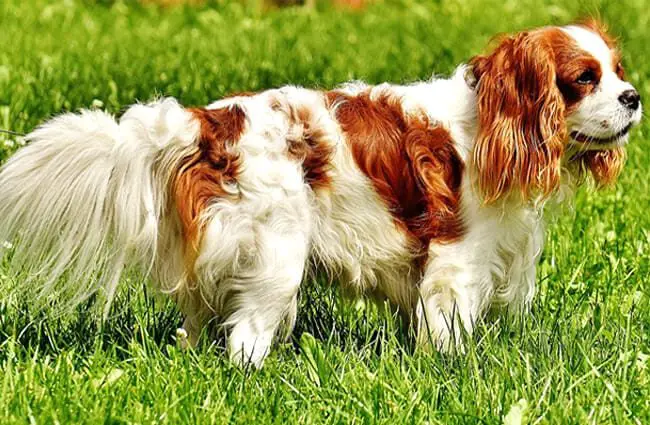
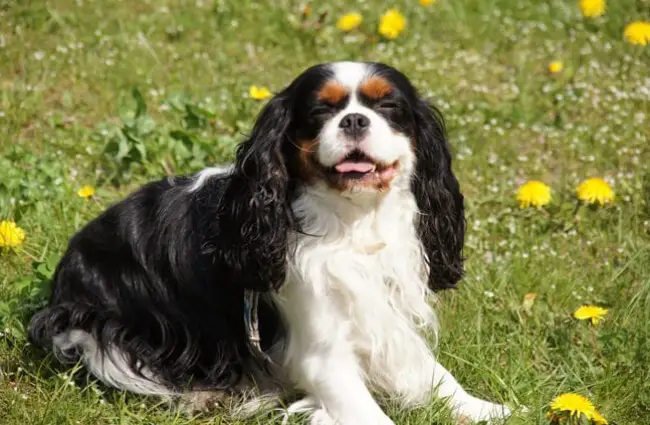
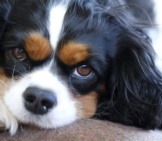

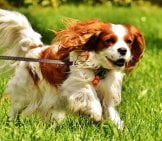
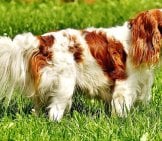






![Red Angus Closeup of a beautiful Red Angus cowPhoto by: U.S. Department of Agriculture [pubic domain]https://creativecommons.org/licenses/by/2.0/](https://animals.net/wp-content/uploads/2020/03/Red-Angus-4-100x75.jpg)

